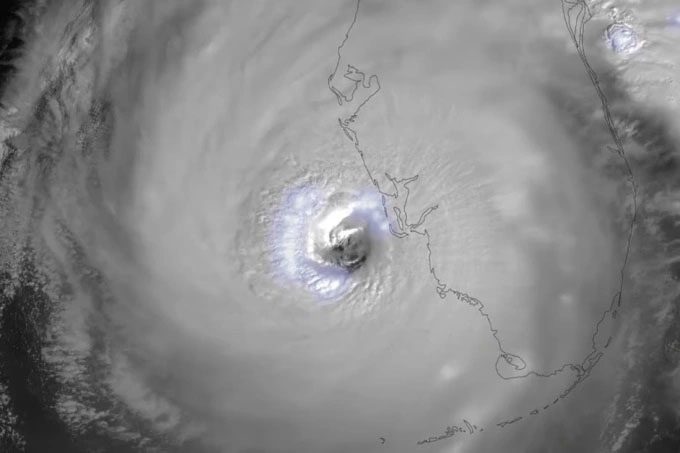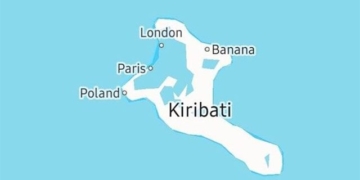Predictions regarding the El Niño phenomenon that may occur this year will reduce the intensity and number of storms forming in the Atlantic, but the situation is different in the Pacific region.
In particular, climate change is causing this type of natural disaster to disrupt the rules of weather on Earth, making storms increasingly difficult to predict.
Therefore, even if this year’s storm season is less intense, a single storm can still cause significant destruction.
According to the National Oceanic and Atmospheric Administration (NOAA), the world is entering hurricane season. Reports from various weather research organizations agree that the hurricane season in the Atlantic region this year is at normal levels, or even below normal.
In the context of global warming, these statements are raising scientific inconsistencies.

Satellite images show lightning around the eye of the storm as Hurricane Ian made landfall on the Florida coast (USA) on September 28, 2022. (Photo: AFP).
Specifically, increasing ocean temperatures are the “fuel” for storms. When water is unusually warm, the formation of cyclones (the precursor to a storm) is easier and, above all, intensifies more rapidly.
U.S. ocean and atmospheric research agencies estimate that there is about a 40% chance that the North Atlantic hurricane season will be normal.
According to NOAA’s forecast, from June 1 to November 30, 2023, there will be about 12 to 17 tropical cyclones. Among these, 5 to 9 are expected to strengthen into storms, including 1 to 4 major hurricanes.
In 2022, there were 16 tropical cyclones formed in the North Atlantic; this number was 21 in 2021 and 31 in 2020, which was a record number of storms in the Atlantic.
Therefore, the 2023 hurricane season is considered “less active than in previous years.”
El Niño Makes Hurricane Season Uncertain
The United Nations and many climate agencies have forecast that this year the occurrence of El Niño phenomenon is significant, causing warming in part of the Pacific Ocean and affecting global climate.
This phenomenon reduces cyclone activity in the North Atlantic, but in other parts of the world, it will impact weather in different ways.
Specifically, in the Atlantic region, El Niño creates atmospheric pressure with strong winds at high altitudes.
Wind shear prevents cyclones from reaching higher altitudes, making them harder to form and less intense.
However, the issue of global warming causing sea temperatures to rise could alter this situation, as climate change disrupts the natural laws of the atmosphere and oceans.
The forecasts for the 2023 hurricane season are proving to be a challenge for another reason: the Atlantic has unusually warm sea surface temperatures this year, which could provide energy for cyclones to form into storms.
NOAA warns: “Even if we enter a hurricane season that is less intense than in previous years, just one storm can still create a large-scale disaster. For instance, Hurricane Ian devastated the state of Florida (USA) in September, resulting in at least 161 fatalities and tens of billions of dollars in damages.”
The agency estimates that the number of storms forming in the Atlantic in 2023 is forecasted to be between 12 and 17 named storms, among which 5 to 9 are of medium intensity and about 1 to 4 are major hurricanes.
In the eastern Pacific, there are about 14 to 20 named storms expected, with 7 to 11 of medium intensity and 4 to 8 major hurricanes.
For the central Pacific, which includes the Hawaiian Islands (USA), NOAA predicts about 3 to 7 storms.





















































